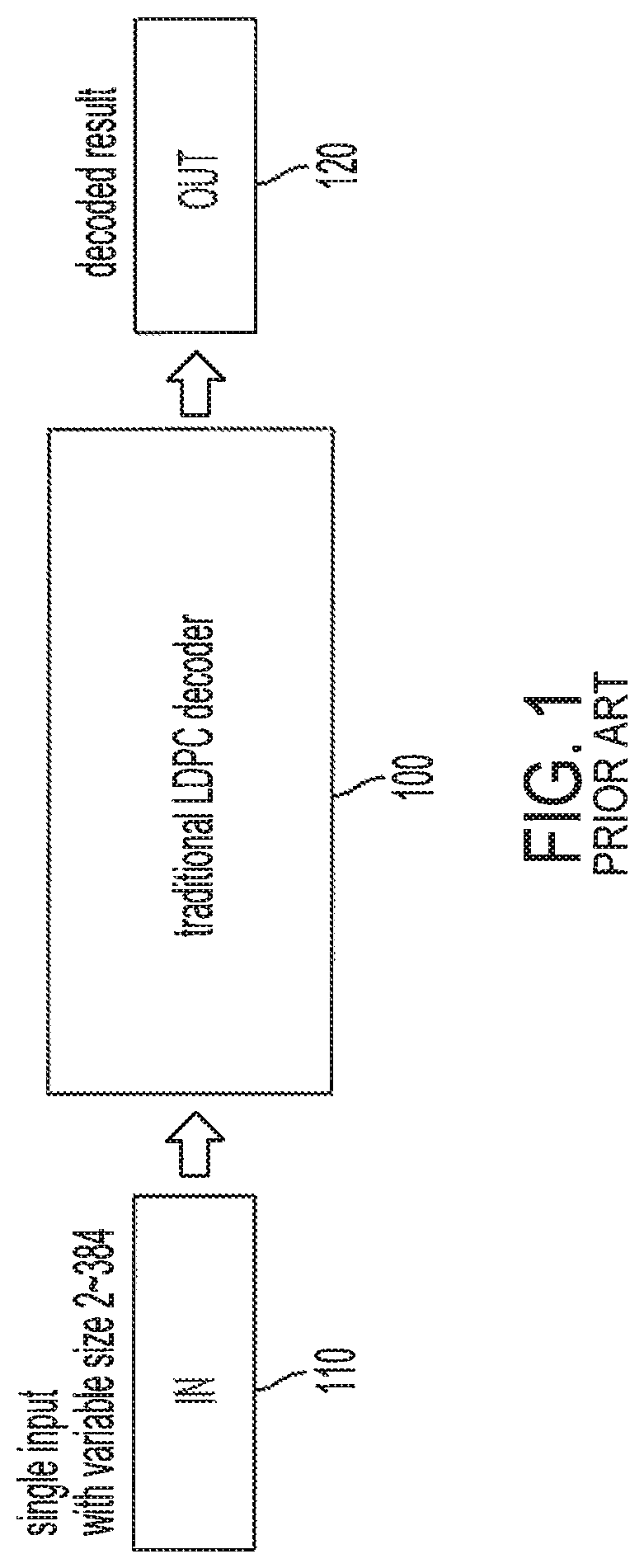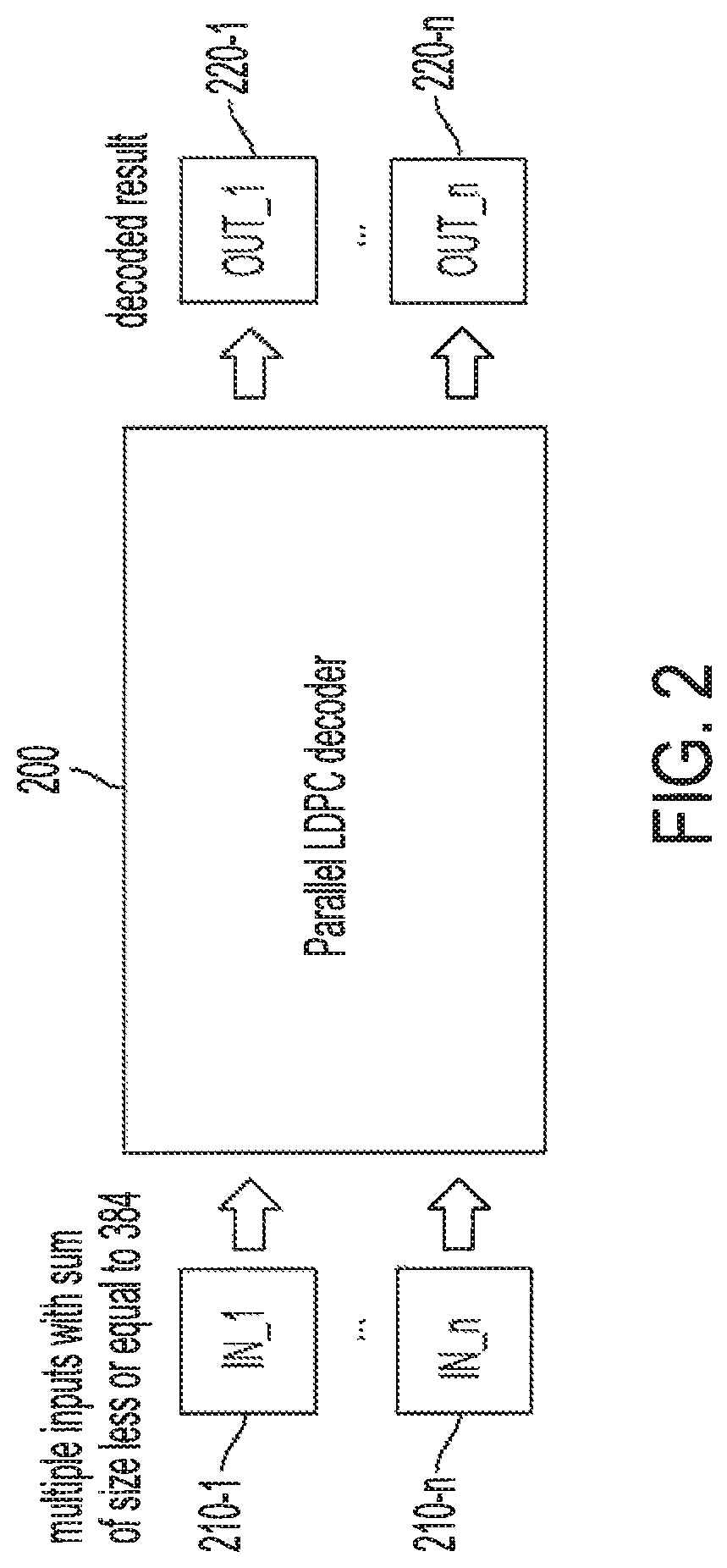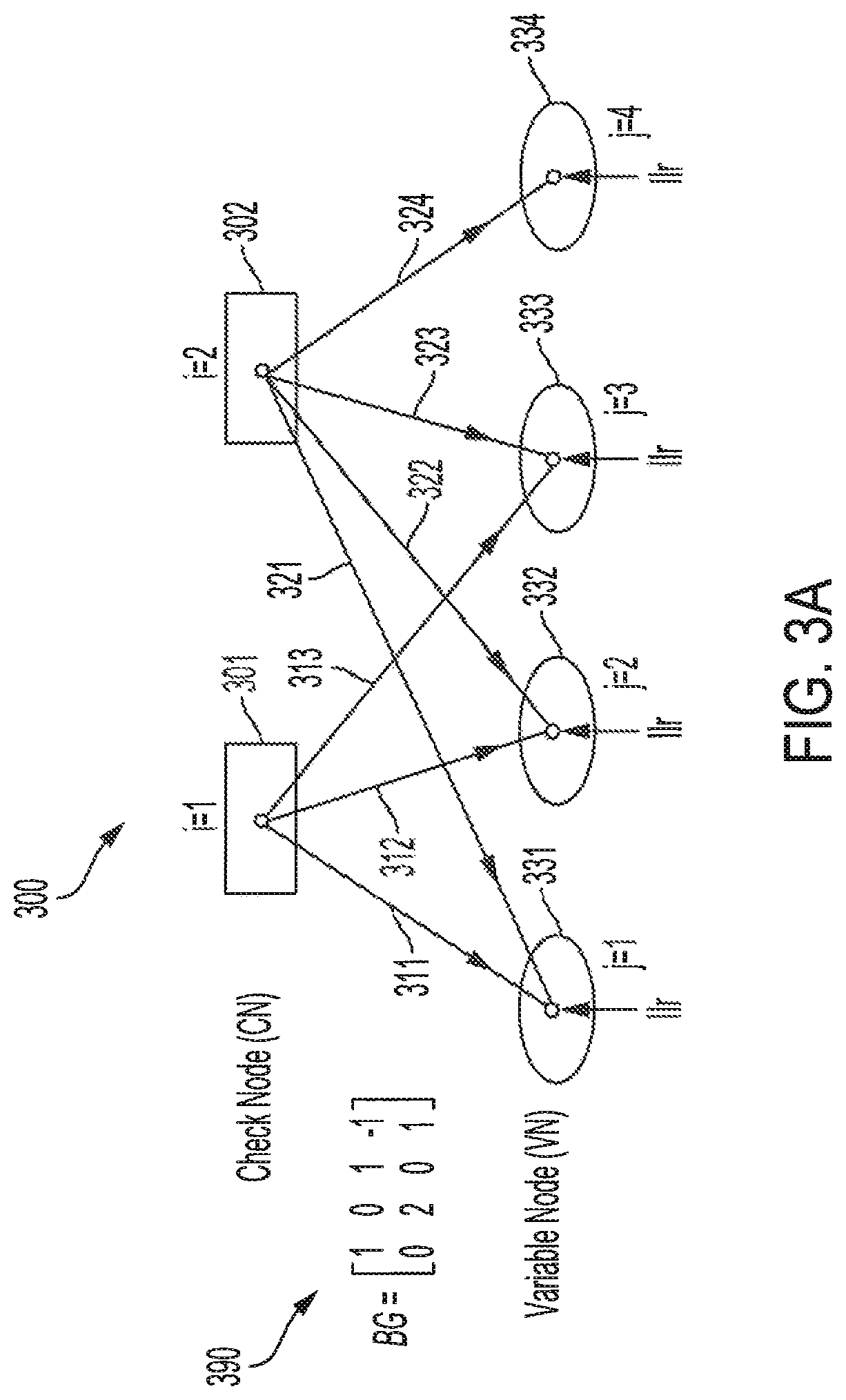Parallel LDPC decoder
a decoder and parallel technology, applied in the field of data communication, can solve the problems of consuming almost half the computational power subject to various sources of noise, interference, and/or other signal degradation, and reducing the efficiency of the decoder logic, so as to facilitate computation power reduction, enhance the effect of operation, and efficient and flexible design
- Summary
- Abstract
- Description
- Claims
- Application Information
AI Technical Summary
Benefits of technology
Problems solved by technology
Method used
Image
Examples
Embodiment Construction
[0025]FIG. 1 shows a traditional LDPC decoder as is commonly used by receivers in 5G cellular networks to decode data encoded using QC-LDPC code for data correction. Accordingly, traditional LDPC decoder 100 of FIG. 1 comprises a 5G LDPC error correction code decoder operable to receive encoded bits provided by received noisy signal 110 (e.g., in log-likelihood ratio (LLR)), and output decoded bits as decoded result 120. In operation, traditional LDPC decoder 100 implements layered decoding logic for iteratively processing parity equations with respect to a single code block of the encoded bits, wherein a valid codeword is indicated by all parity equations being satisfied. It can be appreciated from the foregoing that traditional LDPC decoder 100 can only decode one code block at a time.
[0026]In operation, the LDPC decoder input is a code block having a size dependent upon various factors. In 5G cellular networks according to current standards, base graph (BG) matrixes BG1 and BG2 a...
PUM
 Login to View More
Login to View More Abstract
Description
Claims
Application Information
 Login to View More
Login to View More - R&D
- Intellectual Property
- Life Sciences
- Materials
- Tech Scout
- Unparalleled Data Quality
- Higher Quality Content
- 60% Fewer Hallucinations
Browse by: Latest US Patents, China's latest patents, Technical Efficacy Thesaurus, Application Domain, Technology Topic, Popular Technical Reports.
© 2025 PatSnap. All rights reserved.Legal|Privacy policy|Modern Slavery Act Transparency Statement|Sitemap|About US| Contact US: help@patsnap.com



